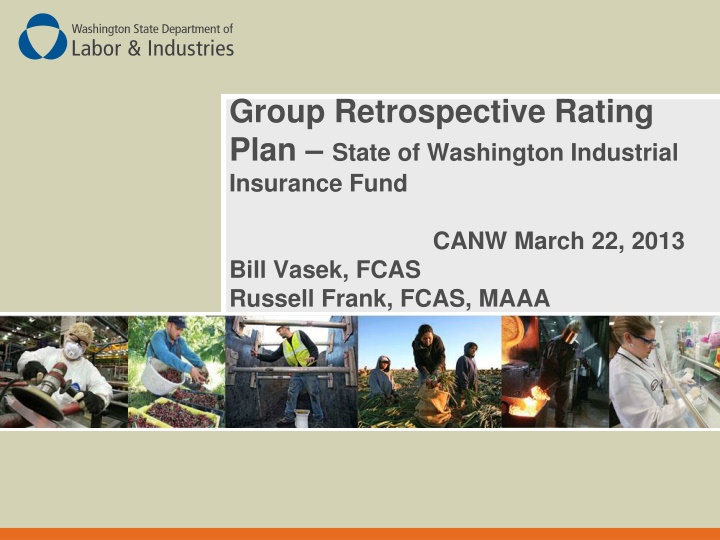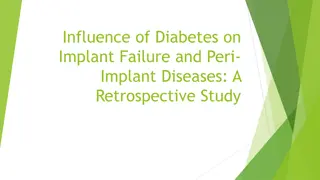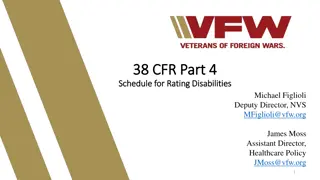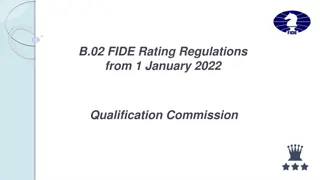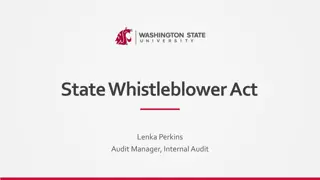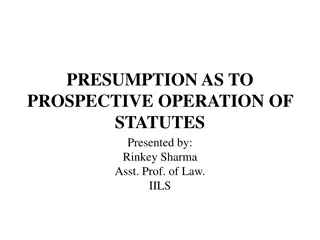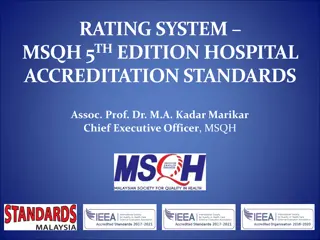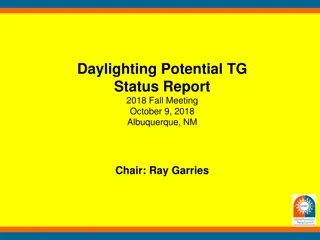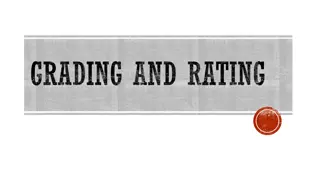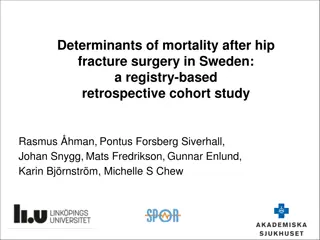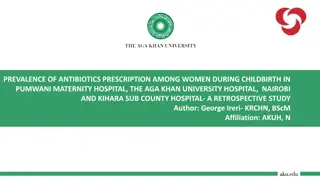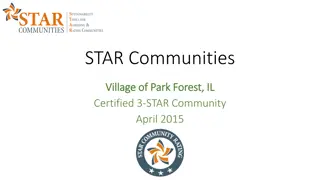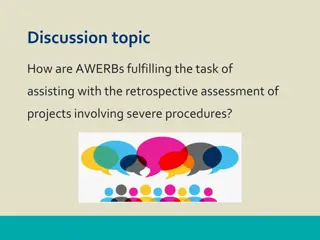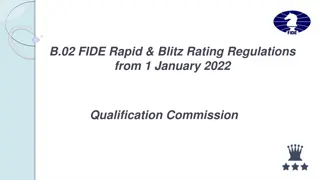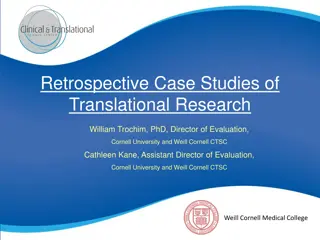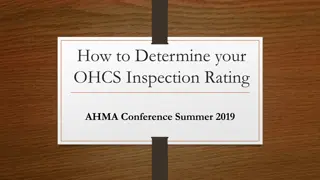Overview of Washington State Group Retrospective Rating Plan
Explore the group retrospective rating plan in Washington State's Industrial Insurance Fund, featuring a 30+ year history, unique features, hazard groups, insurance charges, and the process of retrospective premium evaluation. Learn about the inception of the program, individual risk rating, and the method of rating groups as a single entity. Discover the evolution of the program, including the introduction of hazard groups and the responsibilities of business associations in distributing refunds and premium assessments.
Download Presentation

Please find below an Image/Link to download the presentation.
The content on the website is provided AS IS for your information and personal use only. It may not be sold, licensed, or shared on other websites without obtaining consent from the author.If you encounter any issues during the download, it is possible that the publisher has removed the file from their server.
You are allowed to download the files provided on this website for personal or commercial use, subject to the condition that they are used lawfully. All files are the property of their respective owners.
The content on the website is provided AS IS for your information and personal use only. It may not be sold, licensed, or shared on other websites without obtaining consent from the author.
E N D
Presentation Transcript
Group Retrospective Rating Plan State of Washington Industrial Insurance Fund CANW March 22, 2013 Bill Vasek, FCAS Russell Frank, FCAS, MAAA
Agenda Introduction to retrospective rating 30+ year history: group retrospective rating of workers compensation insurance Features unique to Washington State Nine Washington State Hazard groups Washington State Insurance Charges 2
Introduction to retrospective rating Individual (and grouped) risk rating Risks are self-rated retrospectively Premiums are limited for unexpected large single and aggregated claim costs Minimums to help offset insurance charges Retrospective premium = Sum of charges for: Actual limited losses Administrative expenses Net Loss limitation insurance Refund = Standard premium Retrospective premium Annual premium evaluation until finaled 3
History in Washington State State fund for workers compensation created in 1911 Legislature gave the State fund authority for WC rating systems in 1971 (previously done by legislature) Group: self-insurance, dividend, or retrospective rating plan? Retrospective rating program began in 1981 Groups rated as a single entity Tables based on published NCCI table M Targeting of overall refunds began in 1985 Medical aid rating began in 1987 Interest added to overall refunds in 1995 Hazard groups introduced in 2011 Tables based on WA data 4
Groups rated as a single entity One method Each member of a business group would get rated individually Entire group rated by a single insurer Each member of this group would then receive a refund check or additional premium assessment Method used in Washington State All participating members grouped as one entity The business association gets the refund check or additional premium assessment Business association has the responsibility of distributing refunds or additional premium assessment to the participating members All business association members need not participate 5
Targeted annual net refund Net Refund = Refund Additional premiums Total annual net refund of the program based on percentage loss ratio differences between the aggregates of Retro participants and those not enrolled in Retro Think of targeted annual net refund as a dividend pool Refund/additional premiums are distributed to participants based on their relative performance Accomplished via a factor to losses and insurance charges This targeting results in somewhat stable total net refunds Projected future annual refund built into the manual premium rates 6
Plan participation and average refund Retrospective Rating Participation Enrolled premiums as % of State Fund Premium Average Net Retro. Refund 50% % of Participating Premium 56 Associations 35% 45% 40% 30% 54 Associations 35% Retro expanded to include Medical Aid Fund 25% 30% 20% 25% 30 Associations 20% 15% 5 Associations 13 Associations 15% 10% 10% 5% 5% 0% 0% 2009 1981 1983 1985 1987 1989 1991 1993 1995 1997 1999 2001 2003 2005 2007 1985 1987 1989 1991 1993 1995 1997 1999 2001 2003 2005 2007 2009 Enrollment Year Enrollment Year Participation since 1996 has been close to 45% of total standard premiums $648 Million of standard premiums for 2010 enrollments Net refunds have ranged from 14% to 31% since 1985 7
Other unique features Third annual adjustment is final $1.5 Million minimum size for new groups Three final additional assessments and you re out Hazard group assignment based on an index 8
Example of Hazard Group Assignment Summary by Hazard Group HG Premium 1 2 3 946,000 4 996,000 5 533,000 6 2,991,000 7 8 102,000 9 168,000 Total 5,736,000 Index Premium x Index 0.22 0.26 0.37 0.51 0.75 1.00 1.22 1.76 2.78 0 0 0 0 350,020 507,960 399,750 2,991,000 0 0 179,520 467,040 4,895,290 Hazard Index = 4,895,290 / 5,736,000 = .853 Assigned Hazard Group = 5 9
Hazard Groups Excess loss factor at $250,000 selected as basic hazard index Washington risk classification system does not follow the NCCI Need to develop hazard group assignments from scratch, with reference to NCCI and California only as a check on reasonableness Nine Hazard Groups More hazard groups reduce the jump at the boundary 10
Assigning Risk Classes to Hazard Groups Based on excess loss factor (ELF) at $250K Frequency and severity by claim type, credibility ELF as complement of credibility based on Serious ratio (serious pure premium / total pure premium) Credibility weight based on expected loss size 11
ELF calculation for classes Method 1 Method 2 ELF Selected ELF Class Description Expected Loss ELF Credibility Large Classes 510 Wood Frame Building Construction 3905 Restaurants and Taverns 1102 Trucking, N.O.C. 291,973,645 225,966,240 200,558,431 0.1530 0.0705 0.1782 0.1715 0.0727 0.1808 1.00 1.00 1.00 0.1530 0.0705 0.1782 Medium Classes 2904 Plywood and Veneer Manufacturing 4901 Consulting Engineers and Architectural Services 210 Asphalt Paving - Streets and Roads 10,310,548 10,215,399 10,135,996 0.1161 0.1427 0.1875 0.1330 0.1410 0.1859 0.51 0.51 0.50 0.1244 0.1418 0.1867 Small Classes 4601 Explosives Manufacturing 2008 Field Bonded Warehouses 2204 Laundries - Coin Operated 242,239 225,088 210,162 0.1170 0.1377 0.1254 0.1159 0.1413 0.1274 0.08 0.08 0.07 0.1160 0.1411 0.1273 12
Division into Hazard Groups Risk classes were ordered by selected ELF, and divided into 9 Hazard Groups of approximately equal size. Examples: Selected ELF 0.0482 0.0788 0.0858 0.0989 0.1171 0.1314 0.1530 0.1801 0.2327 Hazard Group Class Description 6402 Supermarkets 4803 Orchards 4904 Clerical Office, N.O.C. 3906 Bakeries and Confectionaries - Wholesale, N.O.C. 1101 Parcel and Package Delivery Service 3511 Fiberglass Products Manufacturing, N.O.C. 510 Wood Frame Building Construction 507 Roof Work - Construction and Repair 5001 Logging Operations, N.O.C. 1 2 3 4 5 6 7 8 9 13
Average ELF at $250K by Hazard Group 0.3 0.25 Excess Loss Factor at $250,000 0.2 0.15 0.1 0.05 0 1 2 3 4 5 6 7 8 9 Hazard Group 14
Other major 2011 revisions made when Hazard Groups were introduced New Table of Insurance Charges Based on Washington experience New size group structure New plan choices Several single loss limits, including unlimited Maximum and minimum loss ratios 15
Construction of Insurance Charge Table Use Fourier transform (Heckman-Meyers algorithm) to construct aggregate distribution Fitted severity distributions by claim type for each hazard group Coherent set of negative binomial parameters for claim frequency by size and hazard group Overlap eliminated by creating these tables separately by single loss limit (see Gillam, The 1999 Table of Insurance Charges, CAS Proceedings, 1999) 16
No More Ruinous Tide of Paper No longer any penalty for large number of tables. Separate charge and savings tables by Hazard group Single loss limit Published tables give final charges using LAE = 7.0% of loss Other Admin expense = 4.8% of premium Excel tool: search for retro premium calculator on L&I s web site and un-hide sheets 17
Questions? 18
